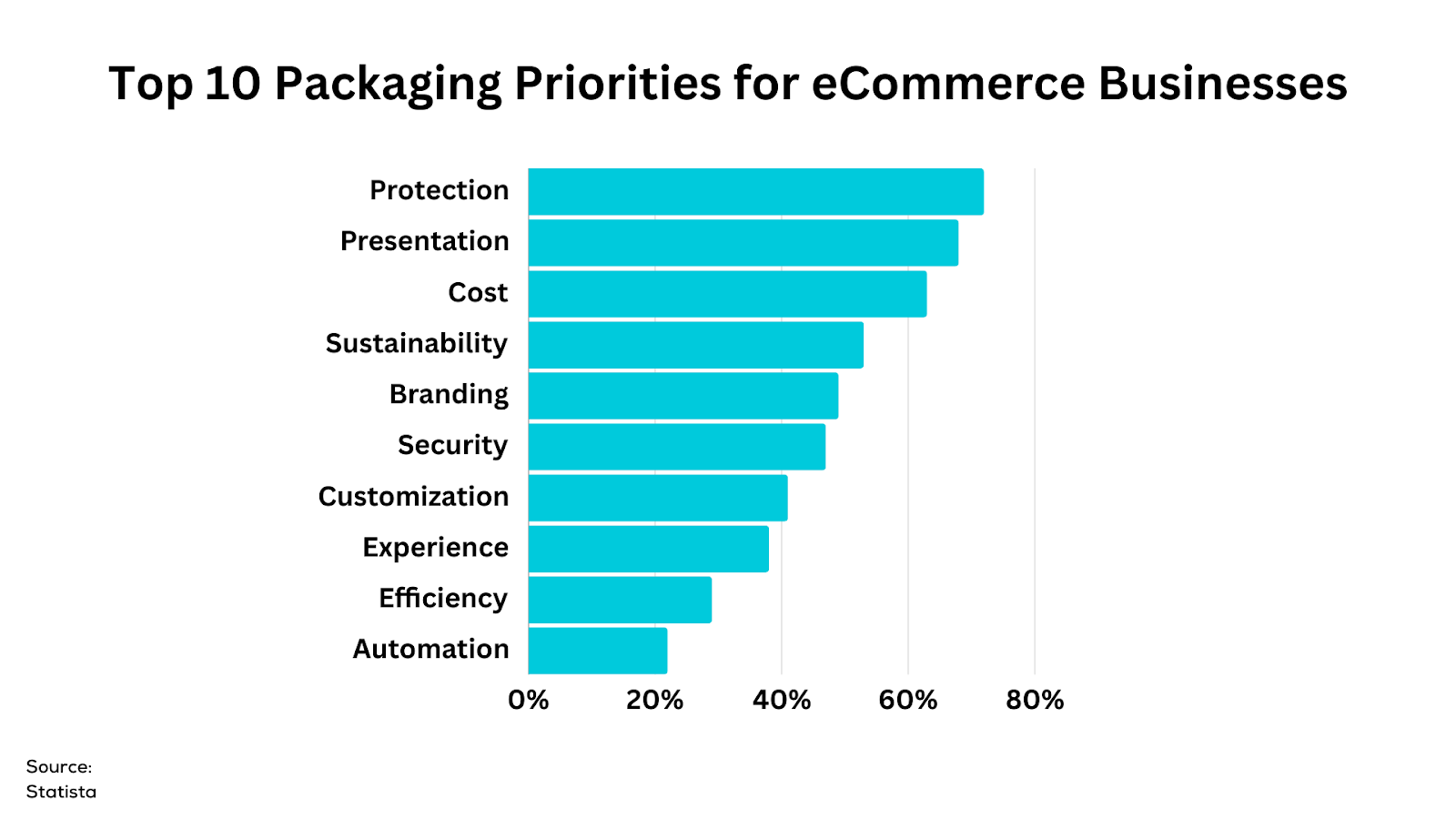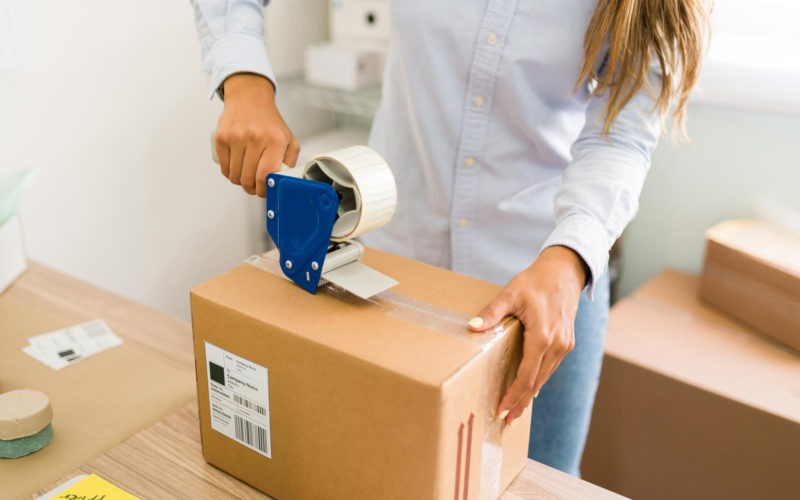In today’s global marketplace, efficient shipping is crucial for businesses of all sizes. You may be an e-commerce store, a manufacturer, or a distributor. The presence of appropriate shipping supplies can streamline your operations and guarantee customer satisfaction. The list includes packaging materials and labeling tools. Here’s a rundown of the top 10, that every business needs.
Introduction
The global market size for eCommerce retail packaging supplies and sustainable packaging materials is projected to grow from $16.8 billion in 2022 to $21.4 billion by 2024. This growth showcases the vital role packaging plays in the success of online businesses. Customers purchase products without physically examining them beforehand. Good packaging is crucial for ensuring. It creates positive unboxing experiences and is good for the environment. Given the booming demand for eCommerce packaging supplies, it’s essential to have the right materials to safely pack and ship purchases, ensuring customer satisfaction and retention.
1. Corrugated Boxes
Corrugated boxes come in a wide variety. This includes standard brown boxes and white boxes for branding. There are also heavy-duty boxes for heavy items, retail boxes for a nice unboxing experience, and corrugated mailers. You should match the box type and specs to the size, weight, and fragility of the products. Heavy-duty double-walled boxes provide extra protection for heavy products. Standard boxes with interior cushions are ideal for typical lightweight shipments. Retail boxes enhance visual appeal.
Matching box specifications to product dimensions ensures secure transportation in waterproof shipping boxes.

2. Mailers
Mailers cater to products that need extra protection or specific shipping supplies. Bubble mailers have cushioning bubbles, providing shock absorption for fragile items. Poly bubble mailers are waterproof wrapping paper to keep contents safe and dry. Standard poly mailers allow easy printing/labeling and stacking. Flat mailers with cardboard inserts provide rigid support for flat documents or artwork. Carefully select inner support and outer envelope types. Base this choice on the vulnerability of the item.
3. Packing Tape
Choosing the right type of packing tape is crucial. Pressure-sensitive tape securely seals corrugated cardboard and kraft paper with strong reinforced adhesion. It allows logos, branding, or shipping labels to be affixed for visual appeal. Multi-directional filament tape excels in difficult environments with moisture, dust, or extreme temperatures. Water-activated gummed tape seals lighter packaging like boxes and envelopes well. Dispensers allow quick, efficient, consistent tape application for faster packing and sealing.
4. Mailing Tubes
Tubes ease the shipping of unconventionally shaped items securely. They come in various types. These include simple kraft tubes for basic protection, thicker 4-ply colored tubes for enhanced durability and appearance, and white tubes with end-caps for posters and artwork. These allow display without unrolling. There are also crimped end tubes with plastic caps to prevent movement. They have interior supports to prevent rolling and bending of contents. Specialized triangles, hexagons, and oversized tubes cater to unique shapes and large documents.
5. Kraft Paper
Kraft paper is extremely versatile for cushioning and void filling. Rolls of flat sheets make it easy to custom-fold paper cushions and wraps. This secures items in place. Pre-formed loose shreds easily fit tight spaces, effectively restricting item movement. Water-resistant reinforced kraft paper boxes provide enhanced durability with moisture while retaining recyclability. Being lightweight, kraft paper maximizes packing efficiency, minimizing environmental impact.
6. Bubble Rolls
Bubble rolls have small air pockets. They provide flexible cushioning that easily wraps around different products. Cohesive bubble rolls only stick to themselves, allowing customized encasing of items. These bubble rolls are high-density. They offer rigid support for heavy, fragile goods. They also absorb condensation to prevent water damage. Perforated rolls facilitate easy tearing off of the required lengths of bubble sheets. Bubble bags combine protection with transparency for content visibility. Bubble rolls ensure versatile and sustainable protection for items.
7. Shipping Foams
In addition to basic foam, certain types of foam protect against various hazards. Soft foams prevent physical pressure damage. Low static foam minimizes electronic component damage. Crosslinked closed-cell foams resist moisture absorption. Chemically impregnated antistatic and fire-retardant foams add safety. Shock-absorbent AirCap air bubble foams provide cushioning while reducing material waste. Cornstarch biodegradable foams appeal to sustainability preferences. Foams secure fragile goods that are irregularly shaped within custom cutouts.
8. Shrink Film
Shrink film caters to different display needs. Clear wrapping keeps items visible and secure. Opaque black film blocks light, preventing oxidation. The vented film allows air circulation. Decorative patterned films improve the appearance of retail displays. Reinforced film resists tears during application. Perforated shrink film allows fresh produce to breathe, thereby preventing spoilage. Shrink film ensures both aesthetic appeal and preservation across various industries.
9. Packing Peanuts
Eco-friendly packing offers necessary cushioning while aligning with sustainability priorities. Biodegradable cornstarch peanuts decompose quickly when disposed of, preventing long-term pollution. Biomass peanuts made from renewable corn and potato starches appeal to green preferences. Anti-static peanuts with corrosion inhibitors keep delicate electronics safe. Colored logo-printed peanuts improve brand visibility. Shaped peanuts allow for automatic dispensing, minimizing material wastage. Peanuts address environmental concerns.
10. Stretch Wrap
Both regular and premium eco-friendly stretch wraps secure pallet loads. But premium wraps reduce harm to the environment. They do this through recyclability and renewable materials. UV-resistant multilayer wraps improve longevity outdoors. Reinforced and extended stretch films minimize material waste. Printed film wraps improve visibility. Perforated and pre-stretched cocoon film wraps provide hassle-free coverage. Bio-based and oxo-biodegradable film wraps appeal to green preferences. Efficient stretch wraps are aligned with eco-goals.
Additional Supplies for Efficiency
Completing packaging operations safely and sustainably requires certain supplies. These include safety gear and a list of contents. You’ll find shipping labels on recycled paper and lined boxes for temperature control. With the growth of eCommerce, efficient and responsible packaging becomes paramount.
- Shipping Software: Invest in shipping software or platforms. They make order processing, label printing, and shipment tracking easier. The tools often work with major carriers. They let businesses compare rates, make shipping labels, and track packages from one dashboard.
- Shipping Envelopes: Keep a stock of shipping envelopes or mailers. Use them for sending smaller items, such as documents, jewelry, or clothes. These envelopes are light and cheap. They are for items that don’t need bulky packaging.
- Custom Packaging Materials: Consider investing in custom packaging materials. These include branded boxes, tape, and tissue paper. Custom packaging reinforces your brand. It also makes unboxing better for customers. This could increase brand loyalty and lead to positive reviews.
- Shipping Manifests: Create shipping manifests or packing slips to accompany each shipment. The documents provide a detailed list of items in the package. They make orders easier and reduce the risk of errors.
- Shipping Labels Pouches: Use clear plastic pouches. They protect shipping labels from moisture, dirt, or damage during transit. Label pouches to ensure that shipping information is legible and intact. They do so throughout delivery.
FAQs
What specifications should I look for when choosing shipping boxes?
Consider the product’s size, weight, and fragility. Also, think about the local climate. Use this info to pick the best box strength, durability, and insulation. Matching box specifications to contents prevents damage.
How do I make my packaging more sustainable?
Focus on renewable, recyclable, and recycled materials. These include plant-based foams, recycled kraft paper, and reusable shipping boxes. Communicate sustainability efforts through logos and branding.
What is the most protective way to package fragile items?
Use bubble rolls and wrapping inside snug boxes. They immobilize contents and absorb shocks. For unique-shaped products, moldable foams prevent abrasion by securing goods against movement.
Conclusion
eCommerce is growing rapidly, and Packaging is vital. It ensures customer satisfaction, efficiency, brand appeal, and environmental responsibility. This happens across the whole purchase journey, from marketing to unboxing. Matching packaging functions to delicate or unconventional product dimensions is crucial.
Protection, presentation, and stability are packaging’s main purposes. But, the move to sustainable materials demands eco-friendly options. These options must keep durability and reliability. New options are emerging. They include plant-based foams and biodegradable bubble wrap. These options prevent waste and fit with changing public opinion. The public prefers environmentally responsible businesses.












